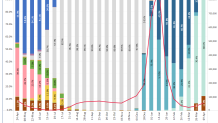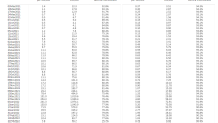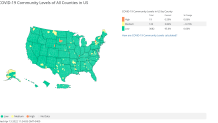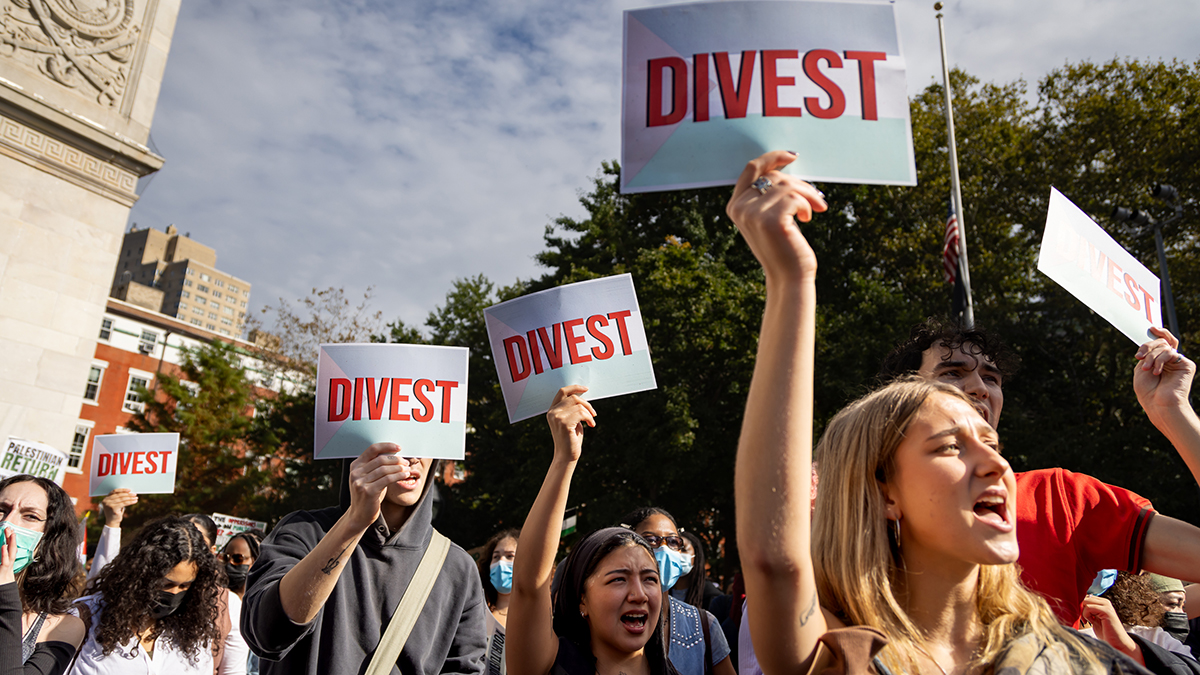Two omicron subvariants of the highly transmissible BA.2 strain are fueling "significant community spread" in parts of New York, state health officials say, calling their data the first charting such subvariant transmission rates in the U.S.
The emergence of subvariants BA.2.12 and BA.2.12.1 both sublineages of the BA.2, strain that some have described as the most contagious version of COVID yet, comes as that parent subvariant intensifies its already-dominant grip on America and New York, where data shows it's circulating at a faster rate than nationally.
New York state data puts BA.2's prevalence at 80.6% of COVID infections, though recently updated reports from the CDC suggest its share could be even higher. And early findings indicate the subvariants could be up to 27% higher than BA.2, which was said to be up to 60% more contagious than the original omicron strain that overtook the globe, leading to unprecedented case rates earlier this year.
Over the last few weeks, state health officials say they've been focusing on higher than average infection rates in Central New York, and they believe the highly contagious subvariants are fueling viral spread in that region.
Get Tri-state area news and weather forecasts to your inbox. Sign up for NBC New York newsletters.
For the month of March, BA.2.12 and BA.2.12.1 rose to collectively comprise more than 70% prevalence in Central New York and more than 20% prevalence in the neighboring Finger Lakes region, the state said in an advisory issued Wednesday.

Data for April indicate that levels in Central New York are now above 90%. While the evidence indicates the region is facing the most extensive subvariant-linked community spread in the U.S., health officials say there's no proof of increased disease severity linked to those strains. The data is continually assessed, though.
News
As of Friday, Central New York owns the highest rolling positivity and case rates per 100,000 residents of all 10 New York regions, and it's not even close. The rolling case rate for the region that includes Cayuga, Cortland, Madison, Onondaga and Oswego counties has a 12.4% rolling positivity rate, well above the next closest (Finger Lakes, 9.5%) and dwarfing the rolling rate in New York City (3.1%).
The difference in cases per 100,000 is even starker. Central New York ranks first on a rolling basis (53.6 new cases per 100K over a seven-day average), nearly double the statewide average (28.3) and New York City's below-state average of 26.1.
Breakthrough infection rates have seen an uptick in recent weeks, but it's not clear what (or whats) is responsible. The increase could reflect waning vaccine efficacy among some who have yet to be boosted or another cause. Most importantly, the age-adjusted vaccine effectiveness rate in terms of new hospitalizations hasn't shifted in a statistically significant way. See the chart below for details.
New cases and new hospitalizations with laboratory-confirmed COVID-19 among fully vaccinated and unvaccinated adults, and estimated vaccine effectiveness, age 18 years or older.

State reinfection data also puts Central New York's reinfection rate at a substantially higher level per 100,000 residents than the state's other regions. For now, hospitalizations remain manageable, though again, Central New York's rate per 100,000 (10.52) is well above the statewide average (5.53) and the city's (4.02).
Ultimately, officials say BA.2's dominance was expected and it's expected that some other COVID variant and subvariants will take their turns, too. That doesn't necessarily exacerbate community risk. But the numbers are worth monitoring.
"We are alerting the public to two omicron subvariants, newly emerged and rapidly spreading in upstate New York, so New Yorkers can act swiftly," State Health Commissioner Dr. Mary T. Bassett said. "While these subvariants are new, the tools to combat them are not. These tools will work if we each use them."
New York state intensely stepped up its variant surveillance efforts before the omicron wave started late last year, as did the city, though the share of cases sequenced to isolate variants remains a fraction of the total positives.
According to the CDC, the state has sequenced about 3.43% of cumulative samples since the start of the pandemic, a higher rate than high volume case states like Florida (2.54%) but lower than ones like California (5.79%).
In New York City, health department data puts BA.2 at 85% of positive COVID samples tested, but that data is a week behind that provided by the CDC. Officials say the omicron subvariant now accounts for most cases in the five boroughs.
Just how many cases are attributed to BA.2 may never be known. The city says 14% of all positive samples were sequenced in the latest week of data, fairly on par with its highest weekly rate of surveillance of 16%, notched in late March.
It's not clear from the city's health department page how many samples have been sequenced cumulatively.
Nationally, less than a half percent of America's nearly 80 million COVID cases to date have been genomically sequenced and made publicly available, CDC data shows, which likely reflects the exhaustive process that work entails.
As of Tuesday's update, BA.2 is about 86% of all national positive COVID samples genomically sequenced in the latest two-week data period, up from 72.2% in the CDC's prior weekly update and from 35% in the one two weeks before that.
BA.2 is said to be inherently more transmissible than the original omicron strain -- perhaps the most contagious form of the virus to date, according to a WHO official -- but has not been scientifically linked to more severe cases or proven to be more vaccine-resistant to this point, which is cause for caution but no alarm, experts say.
Anecdotally, reported symptoms are often exceptionally mild -- like those common with an innocuous cold that wouldn't otherwise lay people out. In the case of BA.2, though, positive tests could last for days, complicating matters for a city -- and a country -- fervently trying to reassert its footing amid the pandemic recovery effort.
Still, with more holiday gatherings ahead this weekend for Easter and Passover, health officials at all levels of government are urging enhanced caution.
New York City's health department, for example, reminded people of its recommendation to wear face coverings indoors, especially when in groups when others' vaccination status isn't clear. Also get tested before going, the city says.
"Encourage your friends and loved ones you will see this weekend to get tested as well before you gather," Health Commissioner Dr. Ashwin Vasan said. "To find a testing site near you, or where to obtain an at-home test kit, go to nyc.gov/covidtest or call 311. The Health Department wishes all New Yorkers joy, togetherness and good health."
Nationally, just 19 of America's more than 3,200 counties are considered "high" risk by the CDC, based on its recently debuted community level threat tracker. More than 95% of U.S. counties, including all five in New York City and the entire states of neighboring New Jersey and Connecticut, are considered low risk as well.
Parts of Central New York, though, like Onondaga and Cayuga counties, are now in the CDC's high-risk zone and some surrounding areas have turned yellow recently. New York's Department of Health on Wednesday announced the emergence of new subvariants of BA.2 which officials believe have fueled the sharp increase in Central New York and the surrounding areas.
Data from March in those regions shows that the two subvariants (BA.2.12 and BA.2.12.1) were prevalent in more than 70 percent of cases in Central New York. In April, the rate has shot up to more than 90 percent of cases — making the findings the first reported instances of significant community spread caused by the new subvariants in the U.S.
Given the upticks, the feds plan to extend the nationwide travel mask mandate another two weeks at least, sources with knowledge of the decision said on Wednesday.
Though infections are rising, most counties still have low levels of transmission and hospitalizations, which means people who live in those areas don't need to wear masks indoors under CDC public health guidance.
Dr. Anthony Fauci said this week COVID will continue to circulate in communities for the foreseeable future, and people will have to make their own decisions about the risk they're willing to take based on their age and health status.




